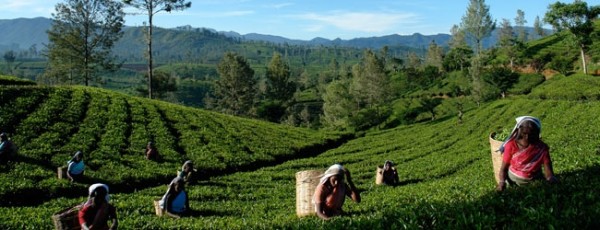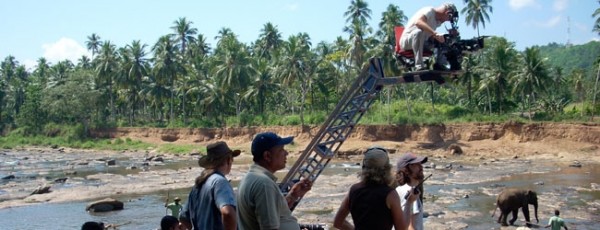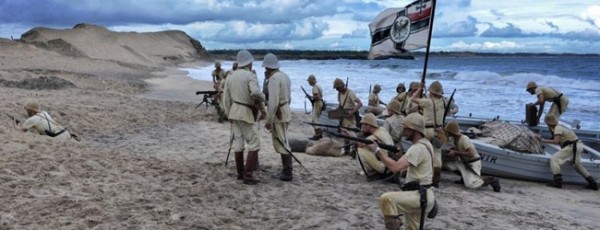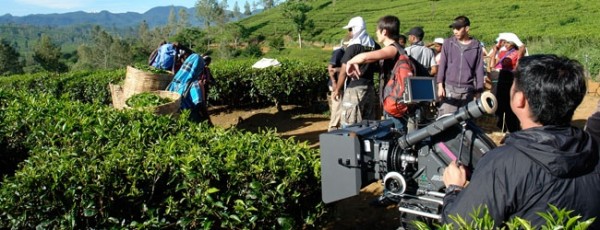Sri Lanka recovers from civil war to re-claim location filming appeal
Sri Lanka lies in the blue waters of the Indian Ocean and the Bay of Bengal. It offers over a thousand miles of beautiful golden beaches fringed with coconut palms. It’s said to offer the best tea in the world and is also well known for its blue sapphires.
 However, when the Sri Lankan team for the 1984 Olympics entered the stadium in Los Angeles, it was not the blue waters and golden beaches, nor the tea and blue sapphires that got the attention of the spectators. The commentator’s introduction was: “The country where Steven Spielberg made Indiana Jones and the Temple of Doom.”
However, when the Sri Lankan team for the 1984 Olympics entered the stadium in Los Angeles, it was not the blue waters and golden beaches, nor the tea and blue sapphires that got the attention of the spectators. The commentator’s introduction was: “The country where Steven Spielberg made Indiana Jones and the Temple of Doom.”
Sri Lanka has always been popular as the ideal filming location for movies based in tropical jungles. The flora and fauna of the central hills was the attraction of movies such as war classic The Bridge on the River Kwai and The Further Adventures of Tennessee Buck. The vegetation and landscapes were also suitable for the Vietnam War movie Iron Triangle, starring Beau Bridges and the late Dr Haing S Ngor. The other advantage was the availability of extras from the Malay community. It was for this reason that Australian production A Dangerous Life, based on the life of Filipino President Ferdinand Marcos, was filmed in Sri Lanka.
Sri Lanka offers over a thousand miles of beautiful golden beaches fringed with coconut palms. It’s said to offer the best tea in the world and is also well known for its blue sapphires.
It was during these productions that the producers had the opportunity to visit other locations and assess the great potential of varied landscapes and architectural buildings of different colonial periods. This resulted in the production of numerous feature films and television series with scripts based in India. Lord Mountbatten – The Last Viceroy, the Hallmark Production of Mother Teresa – In the Name of God’s Poor, with Geraldine Chaplin, and the Italian production Madre Teresa with Olivia Hussey, were a few of them.
However, the industry experienced a lull for over 30 years with the increase in hostilities in the country. This was attributed to the fact that the cost of production was extremely high with the insurance coverage for the prominent actors. Even during this period the production companies did survive with the handling of AD Films and documentaries with smaller crews and limited budgets.
Civil war hostilities came to an end in 2009, re-opening the doors for foreign producers to consider Sri Lanka. The new era commenced with the German feature Emden Men, based on a true story from the First World War. The original schedule was to film only the sequences in the Colombo Harbor as it took place in the original story. However, during the final scout filmmaker Berengar Pfahl realised that the scenes of Cocos Island and the Padang sequences in Indonesia could easily be filmed in the southern part of the country, as old Galle Harbour still retained the period look.
The biggest challenge on this production was to re-model the luxury cruise ship Raja Laut to look like a vintage three-mast schooner. This gigantic task was skillfully handled by a competent art department crew within a very limited period under a very competent and experienced Art Director. The ship’s interior was built at the Mahinda Rajapakse Tele Cinema Village indoor studio and the exterior sets of the studio complex were decorated to depict the Chinese city of Tsing Tao. It was the first international movie filmed here.
Whilst filming in the country the German crew was informed of the unrest in Tunisia, a location that they had to use for further scenes of the movie. The beach locations, with sand dunes in the south of Sri Lanka were used instead as they had the desired look. The railway station in Colombo was decorated with the relevant signage and dressing to depict the Marseilles station.
Civil war hostilities came to an end in 2009, re-opening the doors for foreign producers to consider Sri Lanka. The new era commenced with the German feature Emden Men, based on a true story from the First World War.
The next major production to be filmed in Sri Lanka was the Deepa Mehta movie Midnight’s Children, with a host of Bollywood stars. The change of landscape in present-day Mumbai made it difficult for the Director to identify suitable locations for this period film. Mehta looked to Sri Lanka, having filmed with us before. Her main concern was to find locations that could double for India, Pakistan and Bangladesh in time periods ranging from 1947 to 1972. In the end the project shot for 60 days and covered an impressive 65 locations.
Sri Lanka has bounced back as the ideal filming location mainly due to Government support. Another reason is that Sri Lanka is a film-friendly nation and the rates are the cheapest in the region. Once the National Film Corporation approves the script, getting relevant approvals for location permits and other ancillary services is a straightforward formality. A representative of the corporation accompanies the film crew for supervision. Customs recognises ATA carnet documents or local bank guarantees for speedy clearance of filming equipment on arrival and departure. Furthermore, the equipment rental houses have upgraded their equipment and have the RED EPIC and 12K HMI flicker-free lights handled by experienced technicians.
Another advantage of filming on this paradise island is the easy access to different locations with minimal travel time. You can travel from the busy streets of the capital Colombo to the sunny beaches down south within an hour. With the opening of the southern express highway you can reach the coastal town of Galle with Dutch architecture in two hours, and within another two to three hours you’ll find the tea gardens and cool climes of Nuwara Eliya, also known as Little England.
The jungle terrain of the hill capital Kandy is another hour’s drive north. The ancient cities of Sigiriya, Dambulla and Polonnaruwa are another two hours away. The east coast of long white beaches, great surf and mangrove lagoons is the best location between May and September. It is no wonder that Sir Carol Reed said “the whole of Sri Lanka is a film set” after shooting Outcast of the Islands.
Sri Lanka Tourism has recognised the tremendous potential of film tourism and is evaluating productions to offer incentives.
Sri Lanka Tourism has recognised the tremendous potential of film tourism and is evaluating productions to offer incentives. The National Carrier has shown keen interest to offer concessions for air passage and cargo of film crews. The film production companies are very optimistic about the future with ongoing negotiations for some feature film shoots scheduled for filming in Sri Lanka this year.
Related Posts
- Filming on location in Sri Lanka
- TFC Japan films Kirin Tea commercial on location in Sri Lanka
- Boomtown Productions films exotic sights for Sri Lanka Tourism
- Rattling Stick heads to Sri Lanka for AXA Insurance commercial campaign
- Eeksaurus Productions films phone charger cable riff in Sri Lanka for Samsung
- Alamo Films shoots on location in Sri Lanka for Adolfo Dominguez fragrance
- On location with Michael Brook, Manager of Screen Auckland
- Scout Asia offers more production resources with new office in Sri Lanka
Related posts:
Comments
Not Logged in
You must be logged in to post a comment




There are no comments